Key takeaways:
- Literary festivals foster community through shared passion for literature, showcasing diverse voices and inspiring conversations.
- Storytelling is a powerful tool that evokes emotions, builds empathy, and preserves culture and history.
- Effective narrative structure relies on understanding traditional arcs, point of view, and pacing to enhance reader engagement.
- For aspiring writers, maintaining a consistent writing habit, embracing feedback, and reading widely are crucial for growth.

Understanding literary festivals
Literary festivals are enriching gatherings that celebrate the written word across various genres and cultures. I remember attending my first festival and feeling the excitement of mingling with writers, readers, and thinkers. It was an electrifying atmosphere—one could almost feel the creative energy buzzing in the air.
These festivals typically feature panel discussions, readings, and workshops that offer attendees a chance to dive deeper into the craft of writing and storytelling. I often find myself wondering—what is it about these events that fosters such a sense of community? It’s the shared passion for literature that draws people together, breaking barriers and sparking conversations that linger long after the festival ends.
What I appreciate most about literary festivals is their ability to spotlight diverse voices and perspectives. I recall a particularly moving session where an author shared their journey through adversity, leaving the audience in thoughtful silence. Isn’t it fascinating how stories can bridge personal experiences and connect us on a profound level? That’s the magic of literary festivals—an invitation to explore, learn, and grow through the stories we share and hear.

Importance of storytelling
Stories hold immense power. They can transport us to different worlds, evoke emotions, and provoke thought. I recall a time when I read a novel that completely changed my perspective on a societal issue. It’s remarkable how a well-told story can not only entertain but also inspire change in our beliefs and actions.
I’ve often pondered why storytelling resonates so deeply with us. Perhaps it’s because stories encapsulate shared human experiences, allowing us to relate to others on a fundamental level. When I hear a story about someone overcoming challenges, I can’t help but reflect on my own journey. This connection creates empathy, which is essential for understanding one another in our increasingly polarized world.
Moreover, storytelling serves as a vital tool in preserving culture and history. In my own experiences attending workshops, I’ve learned how narratives can keep traditions alive, teaching younger generations about their heritage. How often do we rely on stories to pass down wisdom and values? The answer lies in the very fabric of our societies; stories help us understand where we come from and inspire us to shape the future.
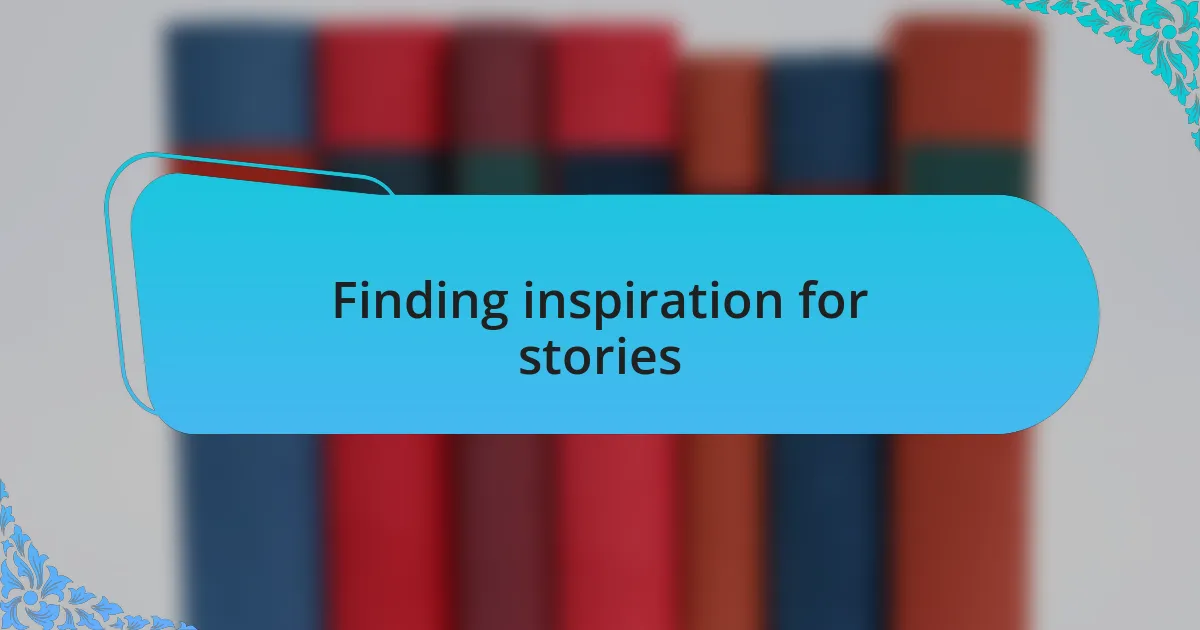
Finding inspiration for stories
Finding inspiration for stories can often feel like a daunting task. I remember sitting in a bustling café, enveloped by the hum of conversation, when a stranger’s laughter caught my attention. It made me wonder about the lives of those around me—what untold stories they carried within them. It’s amazing how our surroundings can spark a narrative if we choose to listen.
Nature has a unique way of unlocking creativity, too. During a hike in the mountains, I felt a profound sense of peace that sparked ideas about resilience and growth. As I stood amidst towering trees and whispering winds, I couldn’t help but feel connected to something larger than myself. How often do we overlook the simple beauty in our environment that can inspire a tale worth telling?
I’ve also found that personal experiences—both joyful and painful—serve as rich soil for storytelling. Reflecting on the time I faced a significant challenge, I realized that the emotions I felt could resonate with many others. It led me to ask myself: what lessons could be woven into a story that might help someone else struggling with their own battles? By sharing these experiences, we not only inspire others but also find healing in the process of storytelling.
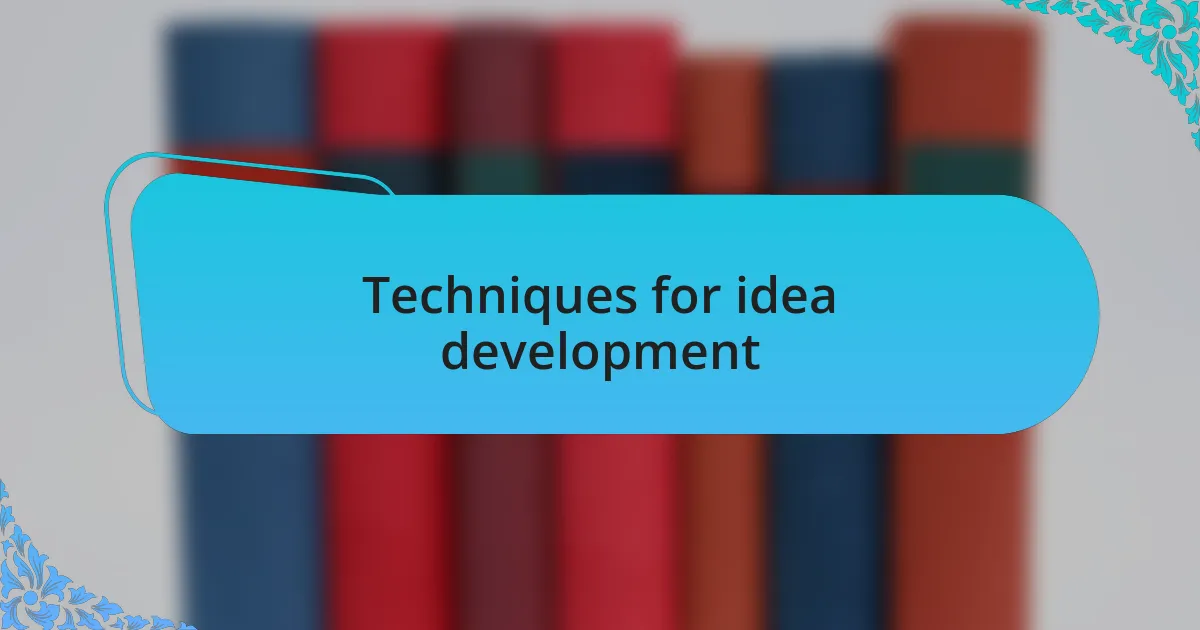
Techniques for idea development
Developing ideas into stories often begins with brainstorming. I like to jot down thoughts on paper, letting my mind wander freely without judgment. This process feels like letting a stream of consciousness flow, and it often reveals unexpected gems. Have you ever had that moment where a seemingly random thought turns into a fully formed narrative?
Another technique that works wonders for me is playing with structure. I enjoy experimenting with different formats, like starting with a climactic point and working backward. This method not only challenges my usual thought patterns but frequently uncovers fascinating relationships between characters and events. It begs the question: how might a different timeline change our perception of the story?
I also find that dialogues between characters can be a powerful tool for idea development. I recall a time when I sat in my living room, creating a fictional conversation between two very different personalities. Their exchanges revealed underlying themes of conflict and understanding. As I listened to their voices, I realized how vital dialogue is in expressing the nuances of a character’s journey. Isn’t it intriguing how these exchanges can breathe life into ideas and drive the narrative forward?
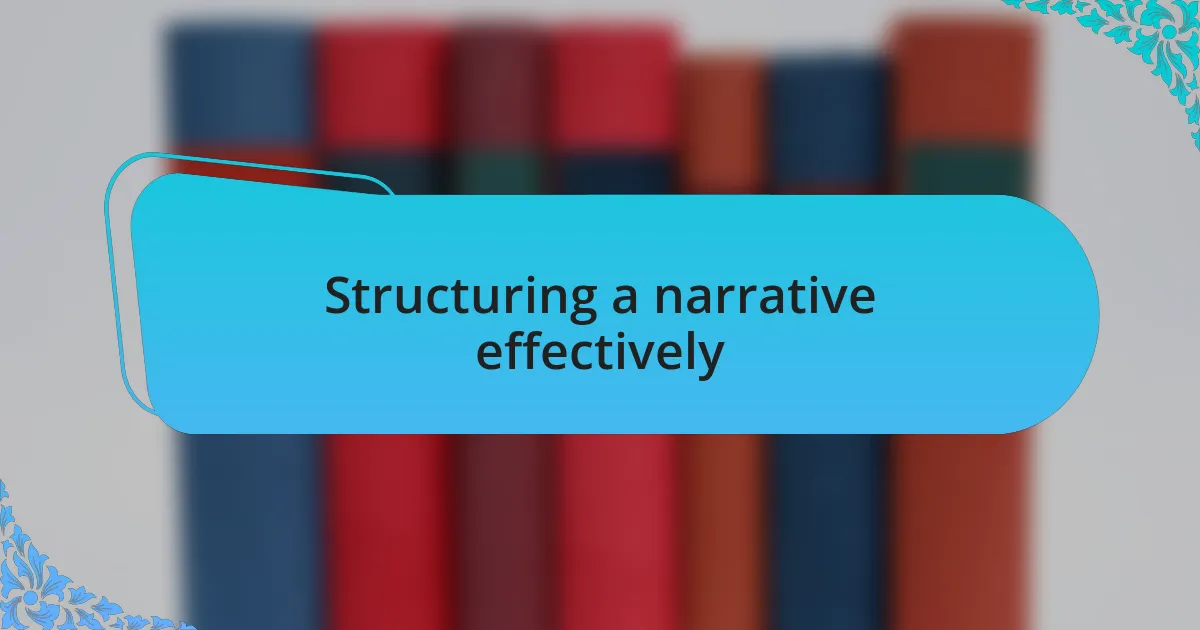
Structuring a narrative effectively
Structuring a narrative effectively begins with an understanding of traditional story arcs, such as Freytag’s Pyramid, which includes exposition, rising action, climax, falling action, and resolution. I often visualize this structure when crafting my narratives, as it helps me maintain balance and tension throughout the story. Have you ever noticed how the climax always feels more impactful when it builds smoothly from the rising action?
Choosing the right point of view can dramatically alter how a story is perceived. In my experiences, switching from first-person to third-person narration not only shifts the reader’s connection to the characters but also enriches the plot by providing broader insights. I remember a short story where I initially wrote in the first person, but as I rewrote it from a third-person perspective, the emotional depth grew immensely as readers were privy to the internal struggles of multiple characters. Isn’t it fascinating how perspective shapes our understanding of a narrative?
Additionally, paying attention to pacing is crucial. I recall a tale where I raced through the climax only to realize later that it left readers breathless—though not in a good way. I learned that by blending fast-paced action with slower, reflective moments, I could create a rhythm that draws readers in and allows them to savor the emotional weight of the story. Can you think of a time when slowing down a narrative immersed you deeper into the characters’ world?
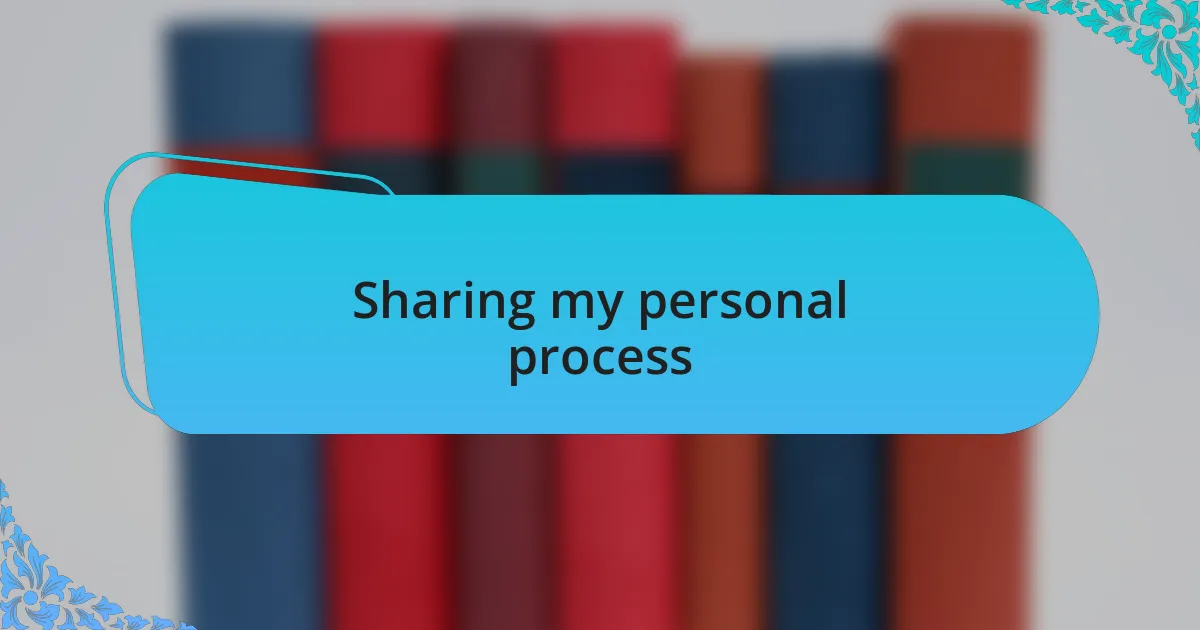
Sharing my personal process
When I think about my personal process for turning ideas into stories, I often start with a seed of inspiration, which can be anything from a dream to an overheard conversation. I remember a time when a friend casually mentioned their childhood fears, and it sparked an entire narrative about facing personal demons. Isn’t it incredible how a simple moment can ignite a powerful story?
Next, I like to immerse myself in the characters’ lives. Developing their backstories helps me connect emotionally with them. I once spent hours journaling from their perspectives, which unearthed motivations and desires I hadn’t initially considered. Have you ever felt that rush of excitement when a character suddenly becomes real to you?
Finally, I weave the plot through a mix of intuitive writing and structured planning. I sketch out key scenes but allow flexibility for unexpected developments. In one project, I had an outline, but as I wrote, a character made a choice I hadn’t anticipated, leading to a much richer and more satisfying ending. Don’t you find that sometimes the best stories are those that surprise even the writer?
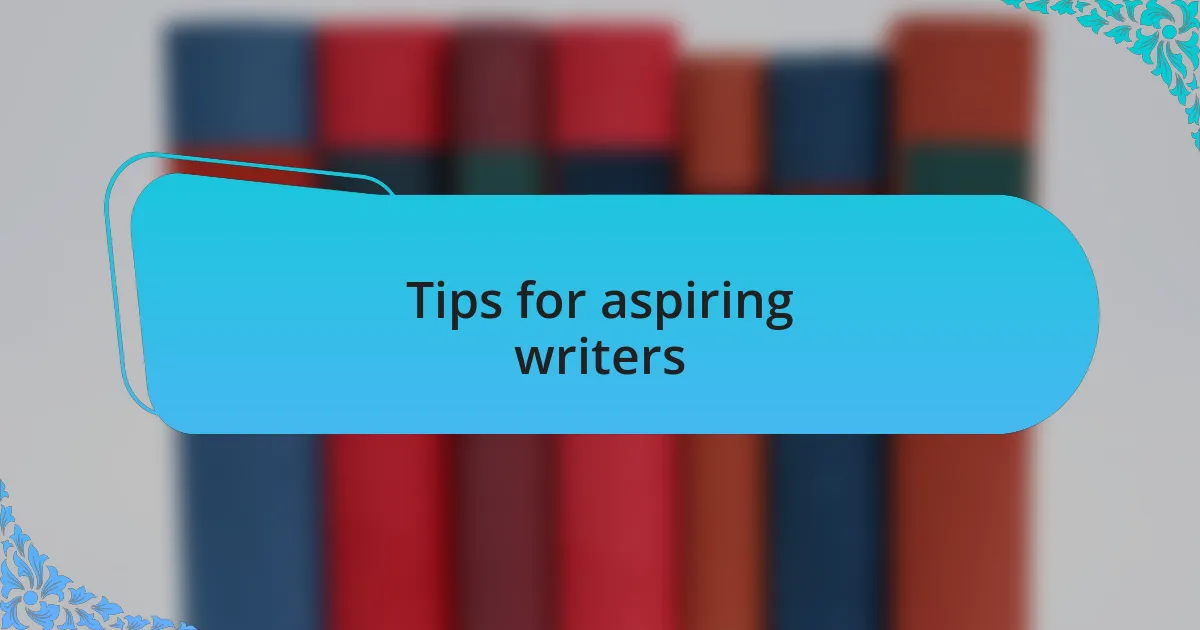
Tips for aspiring writers
When I mentor aspiring writers, one valuable piece of advice I always share is to write consistently. From my own experience, setting aside time daily to write, even if it’s just for fifteen minutes, can work wonders for creativity. Have you ever noticed how inspiration tends to strike more often when you make writing a habit?
Another tip is to embrace feedback, both positive and constructive. There was a time when I was hesitant to share my drafts, fearing criticism. However, once I opened myself to others’ perspectives, I found my work improving in ways I hadn’t imagined. Doesn’t it make sense that someone else’s insight might shine a light on something you’ve overlooked?
Finally, I strongly advocate for reading widely across genres. I’ve often found that immersing myself in different styles and voices enriches my writing toolkit. One summer, I challenged myself to read a novel from a genre I’d never explored—mystery—and it ignited a new passion that influenced my storytelling. What new insights might you discover by stepping outside your usual reading habits?